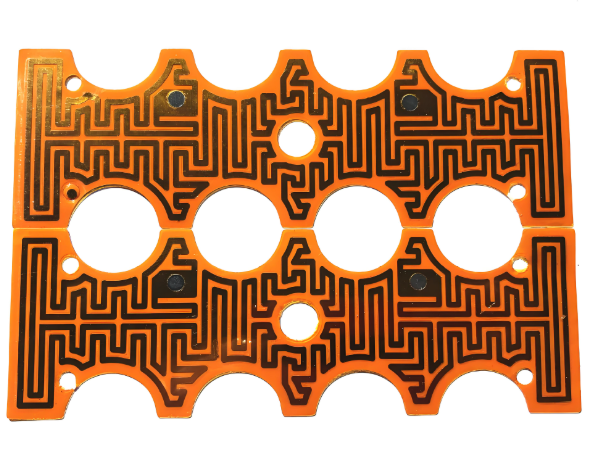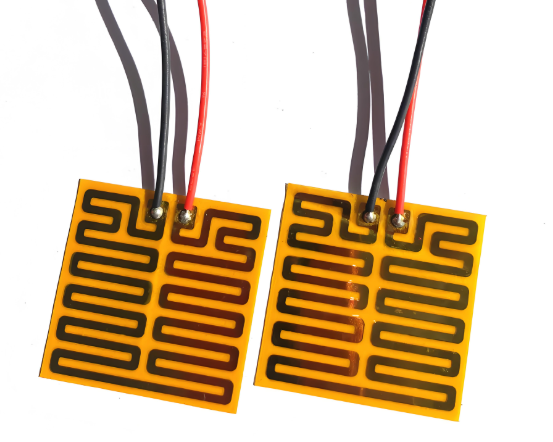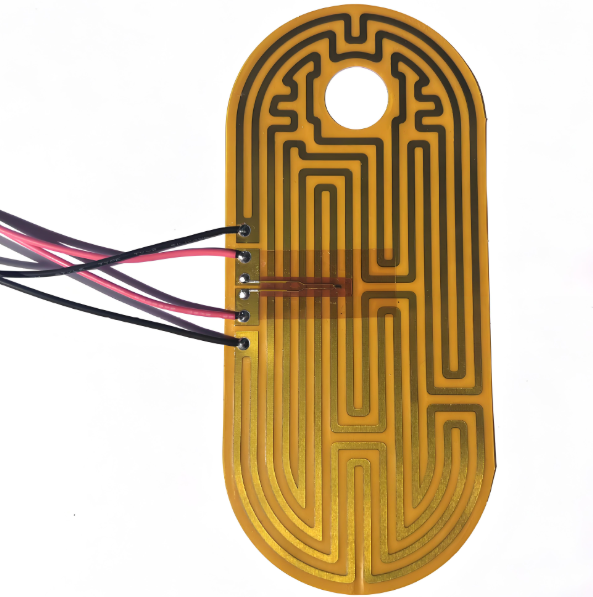In today’s electronics, maintaining precise and stable temperatures is vital. From batteries and sensors to aerospace instruments, reliable heating control can determine the performance and lifespan of a product. That’s where PI heating film, also known as polyimide heaters, have become a game changer.
These thin, flexible heaters combine advanced materials with fine circuit design, bringing both efficiency and durability to temperature control. Whether used in portable devices or industrial systems, a well-engineered polyimide heating film ensures smooth, consistent heat without adding bulk.
Let’s dive deep into what makes these heaters so special — their materials, design principles, working voltage, power density, and how manufacturers like Danyu electronics bring them to life with precision process control.
A PI heating film is a thin, flexible heater made from polyimide (PI) as the insulating layer and a metallic conductor as the heating element. The conductor is etched or printed between two PI layers, forming a compact heating circuit.
Because polyimide has excellent thermal stability, mechanical strength, and chemical resistance, it can work under high temperatures — typically up to 150°C for long-term operation and short bursts up to 200°C when needed.
Compared with silicone or PET-based heaters, a PI heating film stands out for its thinness and precision. It’s commonly used in batteries, cameras, sensors, aerospace instruments, and medical devices, where compactness and reliability are essential.

The performance of any polyimide heater begins with its materials. The conductor layer — which generates the heat — is typically made from high-resistance alloys or copper-based metals.
Common conductor choices include:
The choice of conductor depends on the target resistance, power level, and line width requirements. For ultra-fine circuit designs (line width below 0.25mm), copper becomes the only feasible option due to its etching precision.
The conductor’s pattern determines the heat distribution, temperature rise rate, and energy efficiency. Designers adjust line width, spacing, and thickness to achieve a balance between resistance and power.
For example:
A single-layer conductor design is often preferred since it’s easier to control resistance and heat uniformity. For higher power density or dual-voltage systems, multilayer structures can be customized.
At Danyu electronics, the conductor pattern is precisely formed through chemical etching, followed by AOI (Automated Optical Inspection) to guarantee every line meets the target width and spacing tolerance.

The total thickness of a PI heating film depends on the polyimide base and adhesive layers. Common configurations include:
Standard finished thickness is usually around 0.13mm, but when applied to battery heating, a 0.2mm design is recommended for better mechanical protection.
For bonding and mounting, adhesive tapes play a key role. Frequently used ones include 3M 467, 3M 468, and Crown 513. These can handle up to 150°C continuous operation. If odor or high temperature resistance is a concern, 3M 9077 — a high-grade, substrate-based adhesive — is preferred.
The working voltage of PI heaters ranges from 3.7V to 220V, depending on size and design. Smaller heaters usually run on low voltage (3.7V–24V) for safe portable applications, while larger ones may use 110V or 220V to reduce current draw.
Power density — the power generated per unit area — directly influences heating speed and temperature. Standard PI heaters operate at 1.2W/cm² (dry heating). Small heaters with proper control can reach up to 3W/cm², but a temperature controller is required. For transparent or low-temperature heaters, the working density is much lower, usually below 1W/cm².
Although higher power density means faster heating, it also increases the risk of overheating. So, the heater design should always match the application’s heat dissipation capability.

Precise temperature management defines the reliability of any heating element. PI heaters offer multiple control options depending on the system’s sophistication:
1. Thermostat Switch:
Simple and cost-effective. It cuts off power when the preset temperature is reached and reactivates once the temperature drops.
2. Thermistor or K-type Thermocouple:
Used with electronic controllers for real-time feedback. Enables stable, long-term temperature regulation with digital or dial-based control.
3. Resistive Control:
Some designs integrate a three-level switch to change resistance and modify heating power — low, medium, and high.
4. Fuse Protection:
In high-reliability products, dual protection is used — a temperature controller and a fuse (either single-use or resettable) — to prevent runaway heating.
Temperature uniformity also depends on surface bonding. To improve evenness, aluminum foils can be added for heat spreading, while thermal insulation pads are used when heat retention is required.
Each PI heating film undergoes strict reliability testing to confirm performance under real-world conditions. Common procedures include:
Mass production lots are also subjected to 100% resistance testing, often using low-resistance test racks. For smaller runs, resistance is measured manually with multimeters or bridges.
At Danyu electronics, we go beyond manufacturing — we deliver heating solutions that are tailored to your exact needs. Here’s why customers choose us for their custom polyimide flexible heater projects:
Whether you need a heater for battery packs, optical sensors, or industrial modules, Best Technology delivers precision-manufactured PI heating films designed for stability, reliability, and long-term performance. For custom inquiries or design consultations, contact us at sales@best-heaters.com.
1. What’s the typical working temperature of a PI heating film?
Standard PI heaters operate up to 130°C continuously and can handle short-term peaks of 150°C.
2. Can PI heating films be made in transparent form?
Yes. Transparent versions use conductive films instead of metal foils and can reach sizes up to 580mm × 2000mm.
3. How is resistance tolerance controlled during production?
Single-layer heaters maintain ±5% tolerance, while dual-layer designs follow ±10%.
4. Can PI heaters heat up faster with higher power density?
They can, but beyond 1.2W/cm², additional temperature control is necessary to prevent overheating.
5. What’s the standard thickness of a PI heating film?
Typically around 0.13mm, but can be customized up to 0.2mm for applications like battery heating.
Simply drop your email or phone number in the contact form, and we'll promptly reply you shortly.